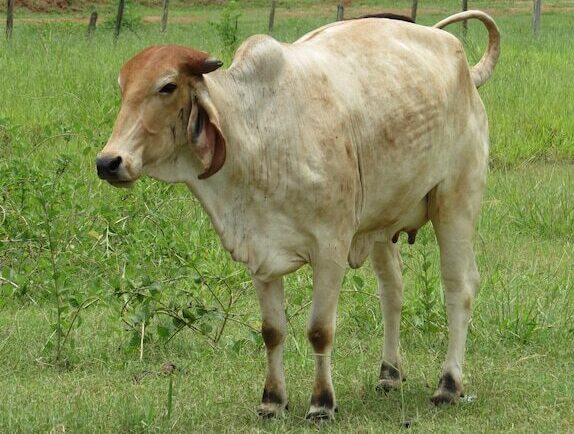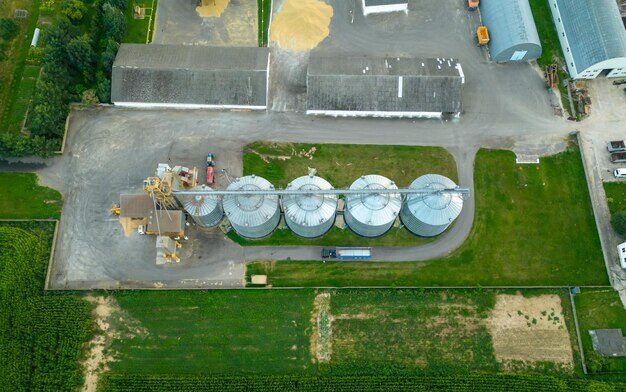Table of Contents
ToggleCow dung in biogas production: the future of renewable energy
introduction
As the world looks for alternative sources of clean, renewable energy, cow dung is emerging as a viable solution in biogas production. Cow dung, traditionally used as fertilizer and fuel, is now being used to produce biogas—a clean and renewable energy source. This process not only provides an environmentally friendly alternative to fossil fuels but also a sustainable way to reduce waste and create value from agricultural byproducts. In this blog post, we explore how cow dung in biogas production is shaping the future of renewable energy and its potential to transform global energy systems.


What is biogas?
Biogas is a type of renewable energy that is produced through the anaerobic digestion of organic matter such as cow dung. This process takes place in an oxygen-free environment where microorganisms break down organic waste and release methane gas. This methane can be used as a clean and efficient source of energy for heating, power generation, and even as vehicle fuel. The use of cow dung in biogas production is playing an important role globally in moving towards more sustainable energy sources.
Why cow dung in biogas production?
Dung is one of the most effective raw materials for biogas production due to its rich organic content and ease of collection. When used in a biogas digester, cow dung undergoes anaerobic digestion to produce methane, which is then collected and used as a clean energy source. Let us look at some of the key reasons why cow dung is an excellent choice for sustainable energy in biogas production.
- Abundant Availability: Cow dung is readily available in farms and rural areas, making it readily available for biogas production.
- Waste reduction: Using cow dung for biogas production helps reduce farm waste, preventing it from being decomposed or released to contribute to environmental pollution.
- Sustainable Energy: Methane produced from cow dung is a renewable source of energy, unlike fossil fuels, which are finite and contribute to global warming.
- Soil conservation: Byproducts of the biogas production process, known as digestate, can be used as natural fertilizers, thereby improving soil health.

Environmental benefits of dung in biogas production
The main advantage of using dung in biogas production is its positive impact on the environment. Let’s see how it helps:
• Reduces greenhouse gas emissions: By obtaining methane from dung, biogas production prevents the release of harmful greenhouse gases into the environment.
• Promotes waste recycling: Instead of allowing cow dung to rot in open fields, which contributes to air and water pollution, biogas production provides a sustainable way to recycle this waste.
• Saves water: Using dung in biogas production reduces the need for water-intensive processes like conventional waste disposal methods.
How does cow dung work in biogas production?
The processing of dung in biogas production involves several steps. First, the manure is collected and placed in an anaerobic digester, a sealed tank that prevents oxygen from entering. Inside the digester, microorganisms break down organic matter, releasing methane gas in the process. This methane is captured and stored, where it can be used for cooking, heating and generating electricity. The remaining solids, called digestate, can be used as a high-quality organic fertilizer.

Frequently asked questions about dung in biogas production
Yes, cow dung can be used alone in biogas production or mixed with other organic materials such as food waste or crop residues to enhance biogas production. However, dung is a highly efficient material due to its ideal organic content.
Initial setup costs for biogas plants can be high, but in the long run, biogas production from dung can be cost-effective due to savings on energy costs and waste disposal. In addition, the byproducts of biogas production can be used as fertilizer, reducing farmers’ costs.
Biogas production depends on manure quantity, digester efficiency, and environmental conditions. On average, one cow can produce enough dung to generate energy for several households.
By using dung in biogas production, farmers and rural communities can generate additional income by selling the biogas as energy or using it to reduce their own energy costs. Additionally, diastat can be sold as organic fertilizer.
Biogas production gives rural communities access to clean energy, reducing dependence on waste management, and sustainable agricultural practices.
conclusion
The use of dung in biogas production is fast becoming one of the most promising solutions for a sustainable future. It not only helps reduce waste and greenhouse gas emissions, but also provides renewable energy sources that can power homes, farms and communities. As technology advances and awareness grows, the potential of dung in biogas production to change the energy landscape is becoming more apparent. By harnessing the power of this natural resource, we can move toward a cleaner, greener, and more sustainable energy future.
